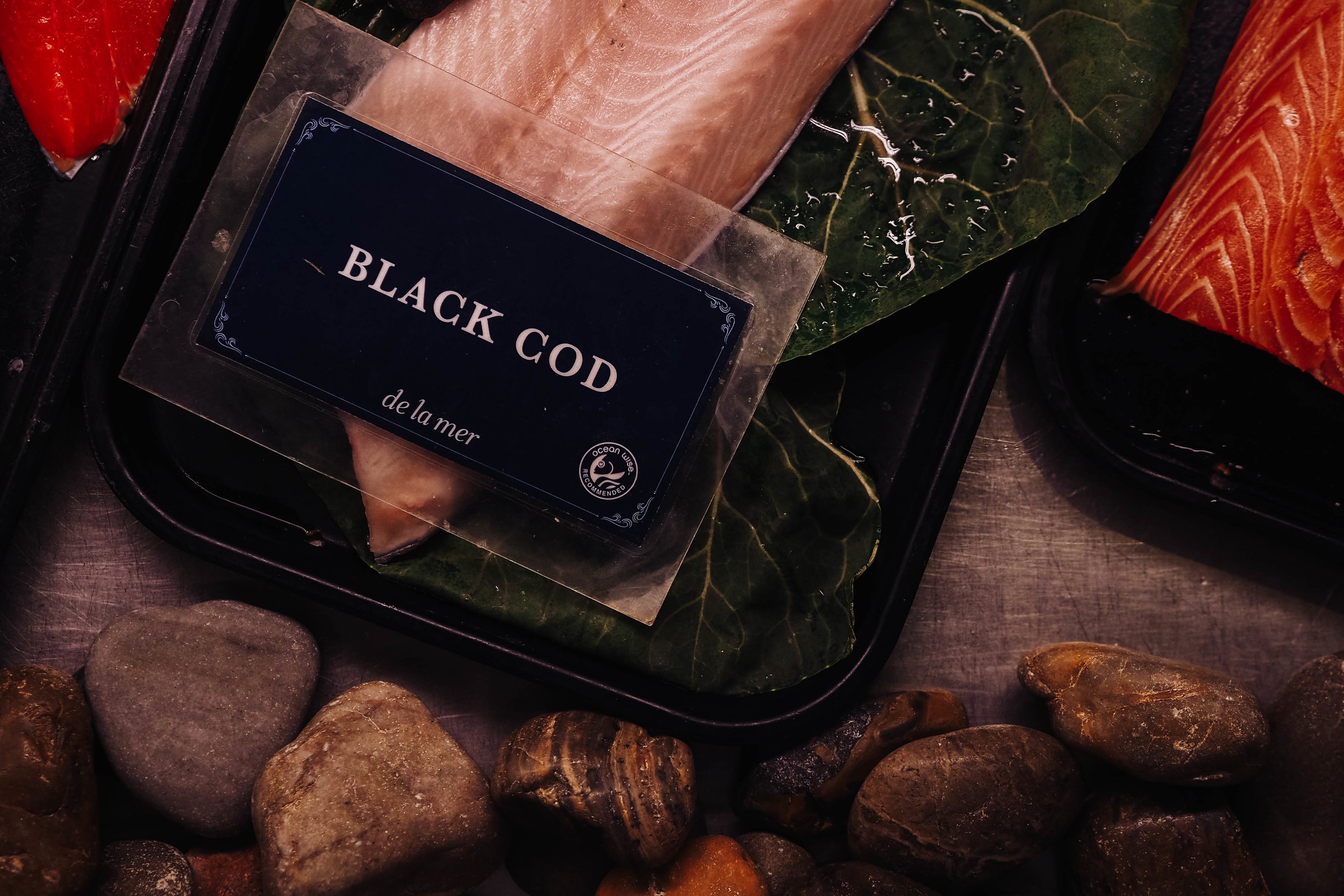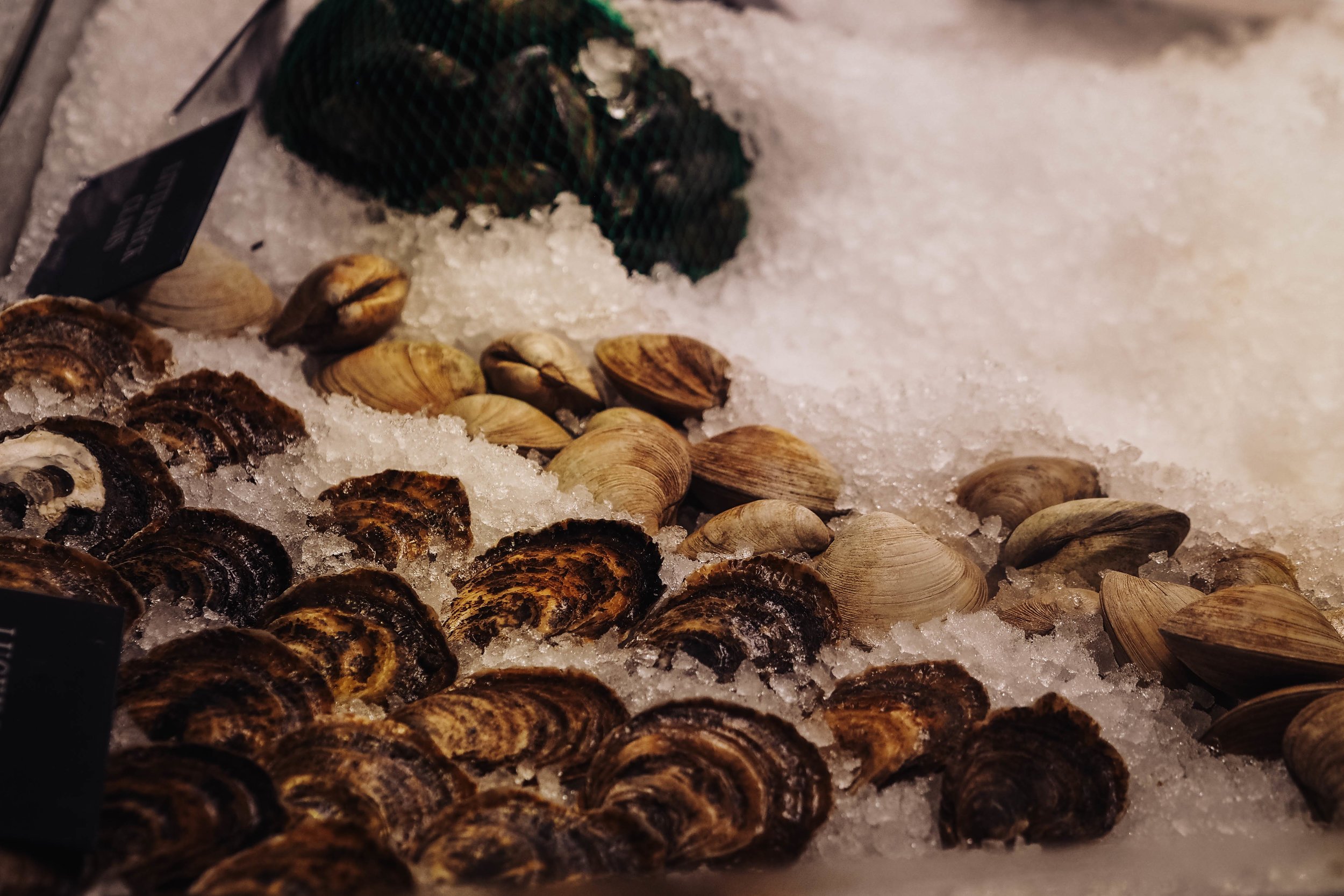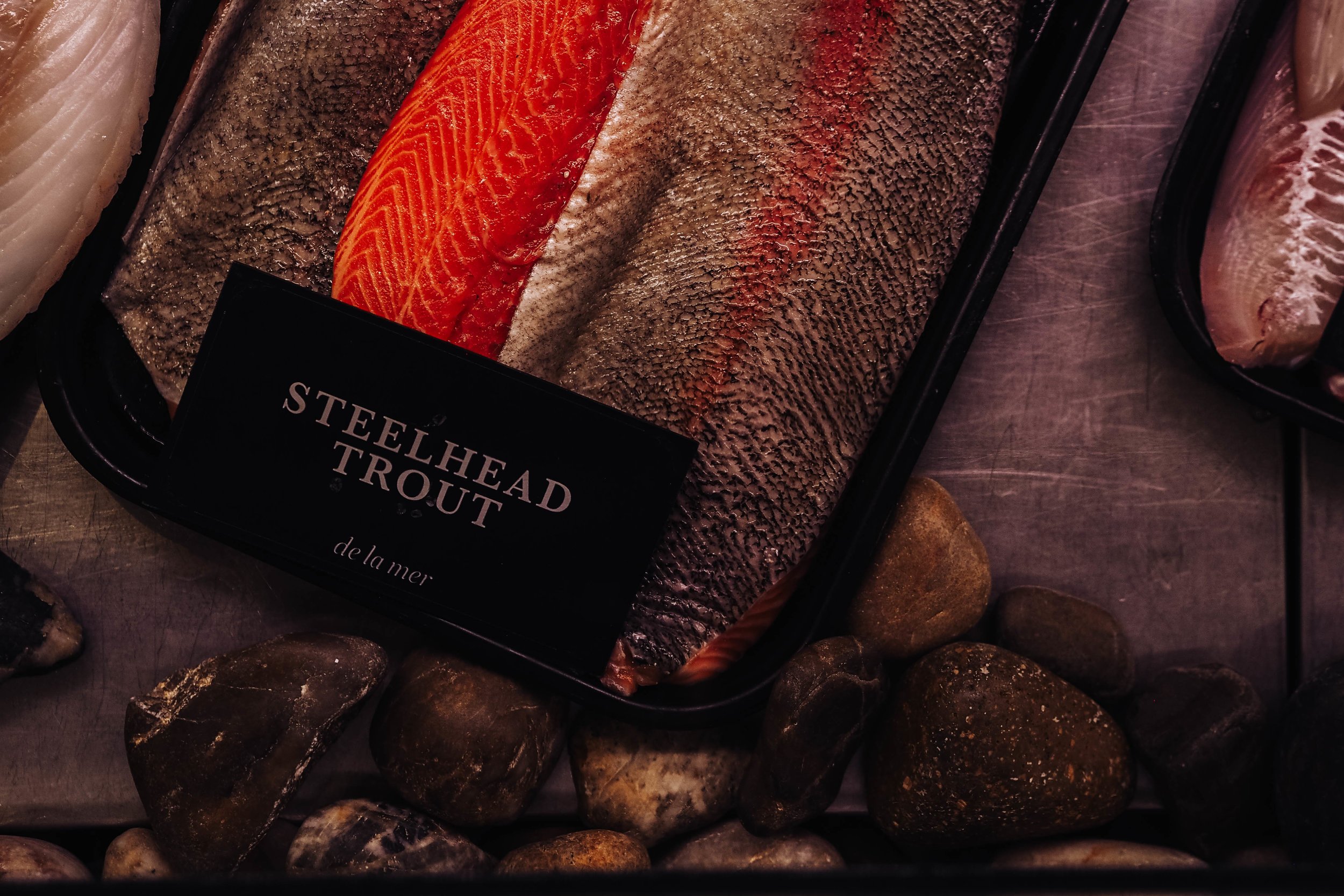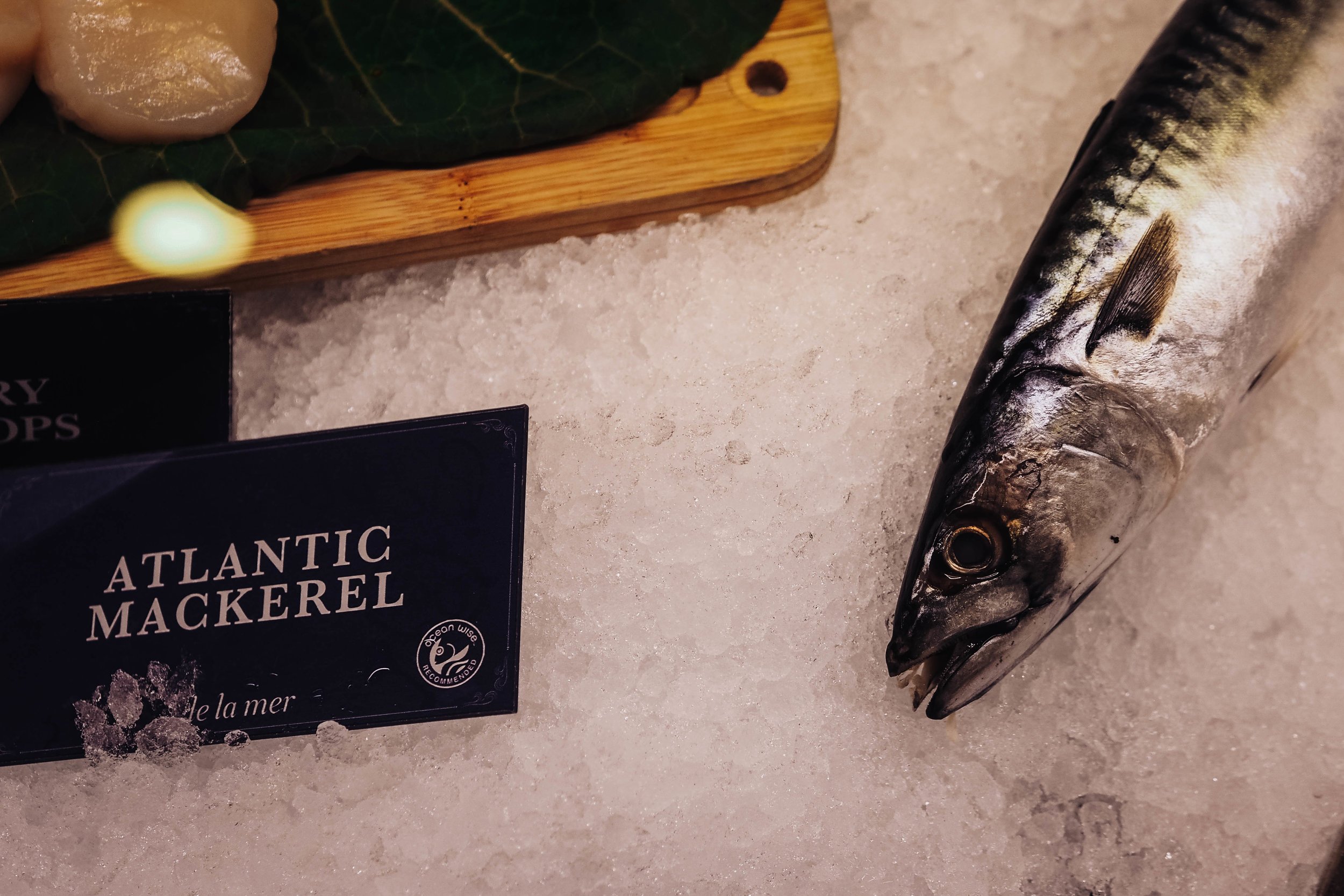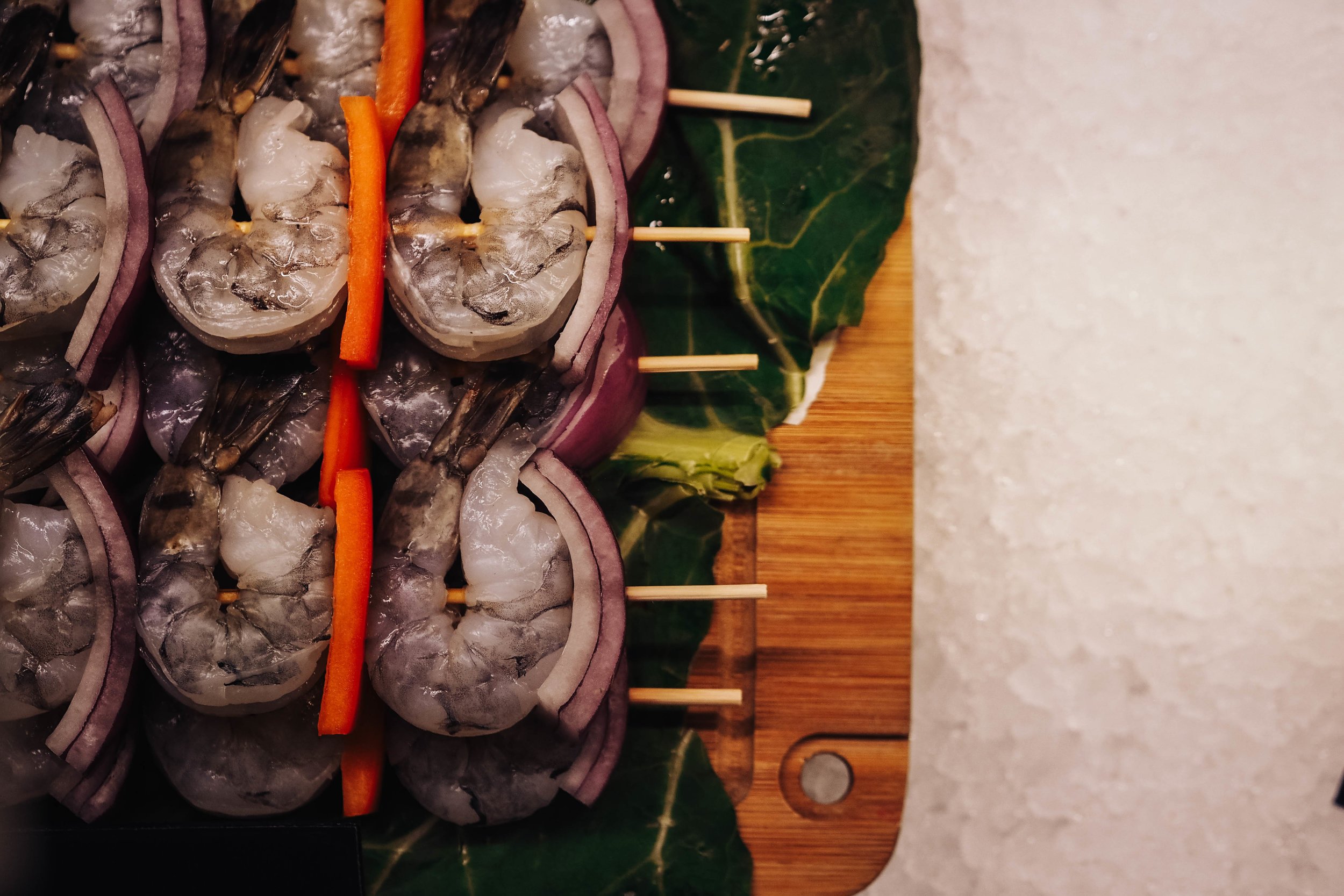De la Mer: All Men Are Equal Before Fish
Walk through the doors of De La Mer Fresh Fish Market, and you just might want to Instagram it.
You might be drawn to the shop’s name laid in black tile alongside whimsical representations of fish. Or the nautical-themed decor arrayed against the wall. There’s even a spot perfect for selfies; there, in the back, with the hand-lettered phrase “All men are equal before fish”. In some regards, it’s easy to forget that you’ve walked into a fish shop. That would be a mistake. You definitely want the fish here.
We meet with De La Mer’s founders, Blake Edwards and Dave Owen, at De La Mer’s flagship store on the Danforth. They greet us with broad smiles and firm handshakes. And, just like that, the interview begins. Where many of our interviews are conducted seated - and in a quiet space - this one is different. This is a walking interview, the two stopping every few paces to talk about another aspect of De La Mer’s business.
Our tour starts, not with the row of fresh cases to the left, but with section of packaged goods at the front of the shop. Alongside speciality jars of condiments, pickles, and sauces are a full line of canned soups and broths prepared in-house. Today features jars of lobster stock, ready to heat and enjoy. Even the packages of bread crisps are a product of De La Mer’s kitchens.
De La Mer’s reach-in coolers feature an even greater array of prepared and ready-to-eat seafood delicacies. “We try and incorporate everything we have,” says Blake as he explains how they look to showcase their fresh seafood in different ways.
Products of note include a trio of tantalizing dips and spreads: citrus smoked trout, spring snow crab, and house-made tzatziki (after all, this is the Danforth). And for those looking to skip the cooking for a weekend meal, De La Mer’s lobster mac ‘n cheese - or the fisherman’s pie, a perennial favourite at the shop - call to me from the frozen section.
Yet most interesting of all are De La Mer’s extensive line of smoked, cured, and candied seafood treats. “We started smoking fish by mistake,” says Dave. It all began with a test batch of a salmon gravlax recipe he learned from the sous chef at the King Edward. The test proved to be a hit; in just a short time they couldn’t produce enough gravlax to keep up with demand.
Dave and Blake’s solution: try adding a smoked product. “Smoked fish is like gravlax - we should try it,” recounts Blake ruefully. This too, was successful - perhaps too successful in the beginning. To keep up with demand, as well as comply with food & safety standards, Dave & Blake needed to invest in all-new fridges and cases for their shops. Today, De La Mer smokes a whopping 12.5 metric tons of fish each year, using 14 different types of fish. As I sample bites of their smoked, candied, and gravlax-ed fish treats, it’s easy to understand how this became a cornerstone of De La Mer’s business. The candied salmon is a particularly unique offering for me; having grown up in the West Coast of Canada, I’m used to a style of candied salmon that is dry and sweet - closer to a jerky. De La Mer’s version remains lusciously moist, while still delivering a pleasant sweet note.
None of this, however, distracts from what remains the undisputed star of De La Mer’s offerings: their fresh fish. “[De La Mer] is all about accessible quality,” explains Dave, “We want people to have access to good quality seafood.”
The interpretation of “quality” can often be subjective. When it comes to fish, freshness is paramount - something that Dave and Blake take to extremes. “We’ve spent a lot of time and effort teaching our suppliers our expectations of quality,” says Dave.
In a metropolitan city like Toronto, fish arrives seven days a week, rather than just the Tuesdays and Fridays of yesterday’s supply chain. The two know what day each fish comes into the market, and make it a practice to turn away product that they know is a couple days old. Much to the chagrin of their suppliers, Dave and Blake have also learned to decipher the coded date stamps on their packaging to ensure they don’t mistakenly take older product.
Once a fish has been in the cold case for one to two days, it’s immediately vacuum sealed and frozen. There are also protocols in place to constantly change and refresh the bags and ice used to store the fish overnight. I’ve worked the fish case of a grocery store during my own career: this is not as normal a practice as it should be. Why, then, does De La Mer do this? “I’d rather sell seven new fish than twelve old fish,” explains Dave.
“Restaurants buy from us because of our quality,” adds Blake proudly.
This adherence to fresh has an added benefit for the shop’s ambiance. “When we started De La Mer, we didn’t want to be that smelly fish market,” says Dave. Indeed, walking into the store, we weren’t assaulted by the typical smell often associated with a fishmonger. This is a good thing; as a general rule, fish should smell like the sea, not the docks.
For Dave and Blake, quality seafood also means sustainable seafood. Blake informs me that about 90% of the fish they sell is either Ocean Wise or MSC certified: “It was a change we felt that we had to do.” Some non-certified is offered at De La Mer; the two see this is part of their mandate to provide affordable quality. For some, the larger price tag of a sustainable-certified product just doesn’t fit the budget.
It’s clear that Dave and Blake are just as passionate about preparing seafood as they are about the fresh product. And for good reason; the two both have extensive food backgrounds.
Dave, a graduate from George Brown’s Culinary Arts program, earned his chops in some of Toronto’s top kitchens, including the King Edward and the Conrad. Yet, like so many chefs, this wasn’t the start of his food obsession. “I’m a good Jewish boy,” smiles Dave, “and one of the non-religious principles is all about getting together with family and eating food.”
Blake Edwards
The same can be said for his partner. “I’ve always worked with food,” explains Blake; his first exposure was as a toddler, taken on trips to Toronto’s Food Terminal by his father. Blake’s family once ran many of the Kitchen Table grocery stores in the city. Blake, too, is George Brown-trained. He’s worked in many of the fine dining establishments in Toronto, including the George and the Celestin (now closed).
And, like many good business partnerships, theirs started by happenstance. I had assumed that the two met through their George Brown connection: not the case. “We met in the back of an alleyway,” recalls Dave, laughing. At the time, Blake was the production manager of a Cobb’s Bread on Bayview Avenue. Dave just so happened to live in a house behind it. A chance meeting soon flourished into a friendship, then a partnership.
Dave Owen
“I’d like to pretend that we do a very scientific business plan here,” jokes Dave. The two were simply frustrated with the lack of a good speciality fish market in the area. Backalley scheming finally reached a tipping point with a question from a regular customer passing by: when are you going to open a fish market?
“The first De La Mer was opened almost on a dare,” says Blake. Those beginning months would prove to be a crash course in how to run a seafood market. Blake refers to these learnings as a vast series of mistakes. It’s not as bad as it seems; a tech startup would romanticize this as a “test and learn” strategy.
“The first time Blake bought fish [the supplier] had to explain what each fish was,” says Dave with a laugh. Blake was alone in the shop to receive the order that day, trying to keep up the facade that he was a fish expert.
“I said to the sales rep ‘my partner is coming into the shop later; could you mark each box with the name of the fish so I don’t have to explain it to him?’,” recalls Blake.
Now, in less than three years, those learnings have shaped De La Mer into a fine-tuned operation. And that single uptown location has expanded into a small fish market empire that spans much of Toronto. Dave and Blake now operate three locations - Bayview, Danforth, Roncesvalles - with a fourth on St. Clair Avenue in the works.
As it happens, each shop is located in a neighbourhood that at least one of the two has lived in at a point in time. Despite their insistence of a lack of scientific model, I still notice that each location is selected with careful calculation. In the case of Dave and Blake, this seems more like an art. A gut feeling that a shop belongs there, in much the same way a sculptor sees the potential in a raw piece of stone or wood.
All of this is tied together by a genuine love of good food and a dedication to their customers. It’s clear that both Dave and Blake have tried, and loved, every single item before they stock them. They truly believe in their products. And that passion is contagious.
Our conversation takes us well past closing hours. We turn the lights on for one last picture of the two, then part ways. But we’ll be back; I know where my next piece of fish will come from.
Dave Owen and Blake Edwards
Words by Nicholas Wong. Photos by Abhishek Dekate.
A special thanks to Dave and Blake for giving us a tour of their shop. Pop by one of their many locations for your next fish fix, and say ‘Hi’ for us.
Full location and hours of operation details can be found on their website here.



